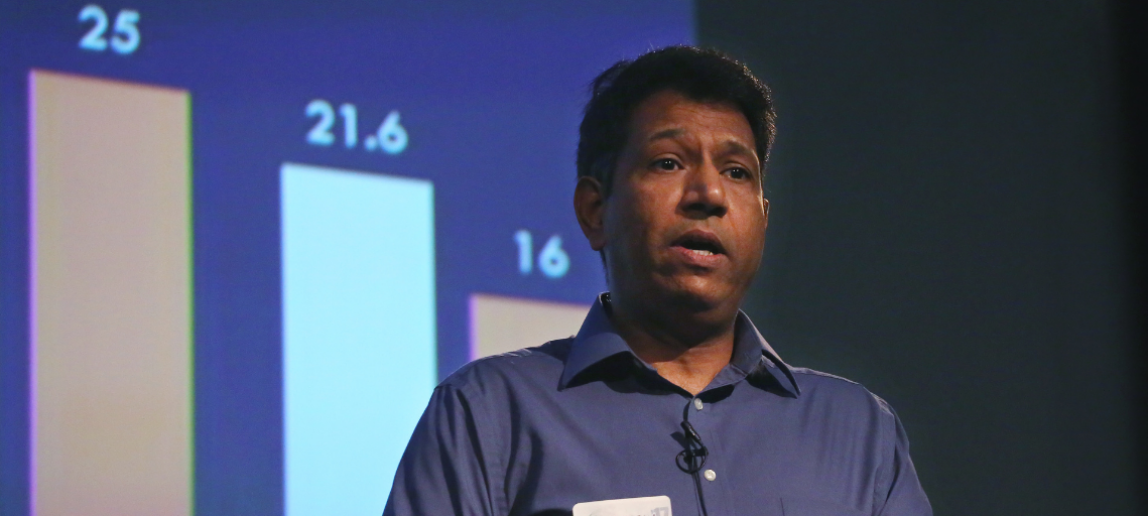One Small (Virtual Reality) Step for Man, One Giant Leap for Mankind
If humans are ever to build, live and eventually thrive on the moon or Mars — momentum for this idea is growing at NASA and any number of private organizations — they must learn to stretch the boundaries of their mental and physical abilities.
How can people be prepared to work in microgravity, low or no atmosphere, without a traditional sense of direction or orientation — or in extreme environments on Earth — and how can we do it safely?
Manish Dixit ‘09, a Texas A&M assistant professor of construction science, is leading a team of researchers developing virtual reality- based simulations to train people to work and live in these environments in a three-year, $1.2 million National Science Foundation-funded study.
Learning New Spatial Skills and Environmental Rules
Learning to adapt in an extraterrestrial location or in a place where common environmental reference points are absent can be a life or death matter, Dixit said.
“If you’re in a city, you can look down the street and kind of know how far a building is away from you,” he said. “If a car is coming at you, you can judge the approximate speed of it because the trees, cars, buildings, and your knowledge of the existing environment helps you with your perception.
“But imagine on the moon or Mars, there is nothing to compare something to. How do you judge distance, size or speed if something is coming at you?”
Dixit and his team are also creating simulations and training for other extreme environments. “Deserts have similar challenges,” he said. “There are only sand dunes for miles and miles. How do you perceive distance and size there?”
A Less Dangerous Way to Train for Alternate Environments
There’s a desperate need for alternative training procedures because existing methods are expensive, strenuous and dangerous, he said.
“To train workers for microgravity conditions like space, parabolic flights are used to experience a microgravity-like environment through free fall,” he said. “This is expensive and risky. Each flight has to perform multiple parabolic climbs and descents to achieve a few seconds of microgravity.”
For now, as the number of people training to go to space is few, Dixit said it’s a somewhat reasonable method, but what about when space is colonized? How will all those people be trained?
Traditional scuba diving training methods are also risky, he said. “In 2014, nearly 1,220 emergency room visits due to scuba injuries were reported in the U.S. alone, resulting in 188 deaths.”
Training for Mars and More in Virtual Reality
Dixit, Ann McNamara and André Thomas, both visualization faculty members, along with Joseph Orr and Jyotsna Vaid, faculty members of the Texas A&M Department of Psychological Brain Sciences, and Greg Chamitoff, a
former astronaut and professor of aerospace engineering, have created VR simulations for a variety of alternate conditions that could mentally prepare trainees.
There are simulations for the International Space Station, underwater, microgravity (free- floating and altered), Martian, lunar, polar (north and south) and desert situations, as well as a city environment as a control scenario.
In the simulations, subjects are asked to perform spatial tasks using virtual objects that test their spatial skills.
Subjects’ eye movements, brain electrical activity, cognitive strategies and mental workload during behavioral tests are monitored in simulated, normal, and altered environments. The team then applies the results to create a framework for virtual training or video games to help people compensate and learn the abilities to keep them safe and productive in alternative environments.
Helping Disaster Victims and Responders
The research team’s findings and simulations are also relevant on Earth.
“Altered conditions exist here too,” Dixit said. “In wildfires, when first responders are helping, they can lose their sense of direction, orientation, and spatial ability. When Hurricane Harvey came, people had issues navigating when they couldn’t see the road.”
He’s also planning high school visits to let students try out the virtual simulations and start discussions about how all the science and rules they know could change in alternate environments where they may work or live someday.
Open Source Solutions
Dixit’s results and VR simulations will be released as open source upon the study’s completion so anyone can develop and use it.
The study was paused during the COVID-19 crisis, but a pilot study that will adhere to social distancing guidelines is set for the fall.
Its funding is from the Future of Work at the Human Technology Frontier Program of the National Science Foundation’s Division of Computer and Network Systems.
For more information, contact rnira@arch.tamu.edu or doswald@tamu.edu.


